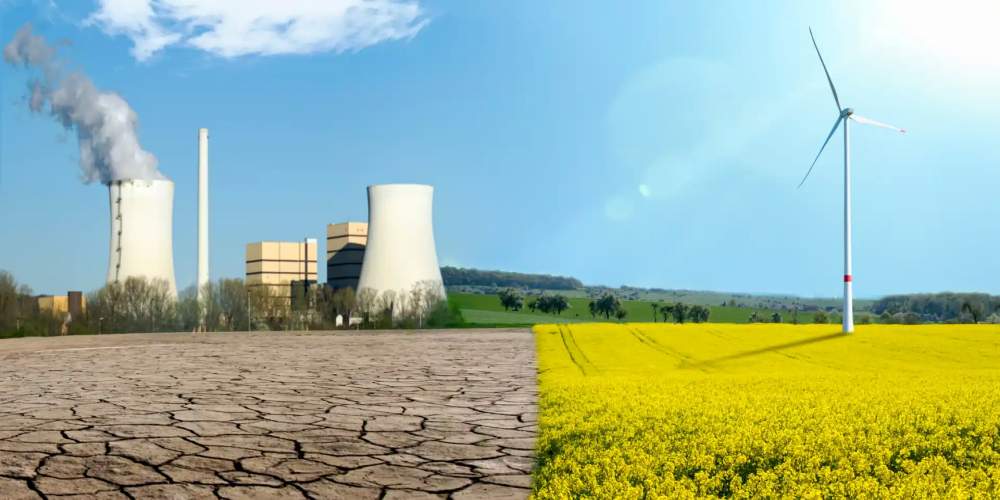
In the wake of the Paris Agreement, the production of wind, solar and hydroelectric energy is ramping up globally. While the shift to renewable power has lowered the world’s carbon emissions, it has also had significant effects on surrounding ecosystems. Here is a closer look at the threat of renewable energy to wildlife, as well as proposed solutions to the problem.
COMPARE PRICES FROM LOCAL INSTALLERS
Compare prices from local companies fast & free
Enter your postcode to compare quotes from leading professionals. We promise to keep your information Safe & Secure. Privacy Policy
Hydroelectric Dams
Hydroelectric dams can block migratory routes for diadromous species like trout and salmon, hindering their ability to reach breeding grounds. Blocking the movement of fish also leads to high juvenile mortality rates.
Governments should make it mandatory for dams to include fish passages — such as fish ladders — to allow migrations to continue uninterrupted. One study of eight dams found 67%-69% of fish that passed through the fishways survived, which is a promising number.
Solar Farms
A solar farm’s blue appearance — which is similar to a body of water — can deceive migratory waterfowl into crash-landing into the panels, killing them. However, potential solutions include:
- Using netting above the panels.
- Reducing the use of artificial lighting, which attracts insects and disrupts bird migrations.
- Creating visually alarming patterns on the panels.
- Playing audio recordings of predators or bird distress calls, teaching birds to avoid the area over time.
Solar farms can also cause habitat degradation, fragmentation and loss for ground-dwelling species. Building solar farms in already-disturbed areas offers one possible way to mitigate their effects on wildlife. Builders should also install fencing with large enough openings to let wildlife through to avoid disrupting animals’ movement.
Wind Turbines
A well-established effect of both onshore and offshore wind turbines is bird and bat collisions. Additionally, the air pressure near wind turbine blades can kill bats by damaging their lungs. One solution is to build wind farms away from major flyways. Birds migrate along predictable routes, so engineers could consult with biologists to build wind turbines away from these areas.
Shutting down wind turbines during peak migration times could also reduce the number of bird deaths with minimal effects on the amount of energy generated. Radar can detect high numbers of birds or bats to shut turbines down automatically, and advanced radar systems like IdentiFlight can recognize bird species with a high degree of accuracy.
A 2018 study found that IdentiFlight correctly recognized 96% of bird species detected by observers. Operators could potentially use the technology to make turbine blades stop spinning in the presence of threatened or endangered bird species.
Mounting ultrasonic acoustic deterrents (UADs) on wind turbines could deter bats. UADs create an uncomfortable noise that repels bats from flying near them. Other potential solutions include painting turbines a different color or illuminating them with UV light to make them more visible.
Tidal Farms
Placing tidal farms in marshes, lagoons, tidal barrages and other intertidal zones can affect migratory wetland fowl. The farms raise the water level such that it submerges the birds’ feeding areas, making them inaccessible. Being unable to access food leads to higher bird mortality.
A 2021 Scottish study also found that higher turbine flow speeds led to a 78% decline in harbor porpoises in the vicinity. Noise from the turbines may have deterred them from the area.
Potential ways to minimize the effects of tidal farms on wildlife are to locate them deeper in the ocean and either increase or decrease their noise levels. Researchers need more data on how wildlife responds to the sound of tidal farms — it may help animals avoid colliding with the turbines, but it could also disrupt their natural behaviors or have no effect at all.
Wildlife and Renewable Energy Can Coexist
Renewable energy is a net positive for the world. It is crucial for achieving net zero emissions, promoting energy independence and stabilizing energy prices. As renewable power becomes commonplace, scientists must research its effects on wildlife to ensure both can coexist. It may require industry-wide changes, but it will be worth it to ensure a sustainable future.
Find a local installer
Welcome to the biggest directory of UK renewable energy companies




























